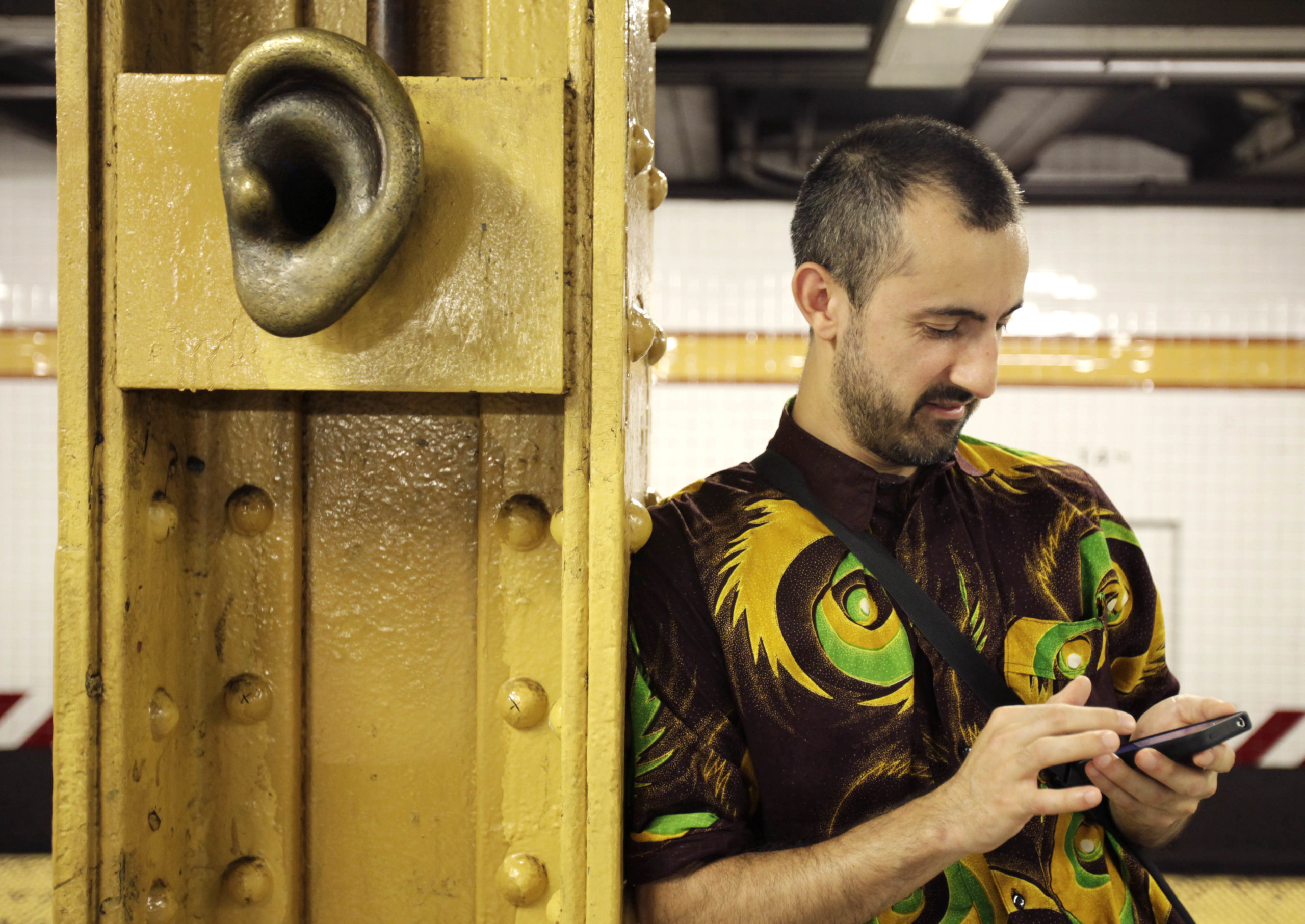No fading out: Wi-Fi coming to all subway tunnels, says MTA
When train leaves station, riders often lose connection

Passenger Gabriel Rivera uses his cellphone at a subway station in Chelsea. AP Photo/Seth Wenig
How many times have readers called someone at an underground subway station, only to have the caller on the other end fade out as the train leaves the station and travels further into the tunnel?
Well, this will change — according to the MTA.
On Tuesday, the MTA announced a public-private partnership to provide cellphone coverage throughout all 418 track miles of subway tunnels, along with an expansion of Wi-Fi service to all 191 above-ground subway and 21 Staten Island Railway stations.